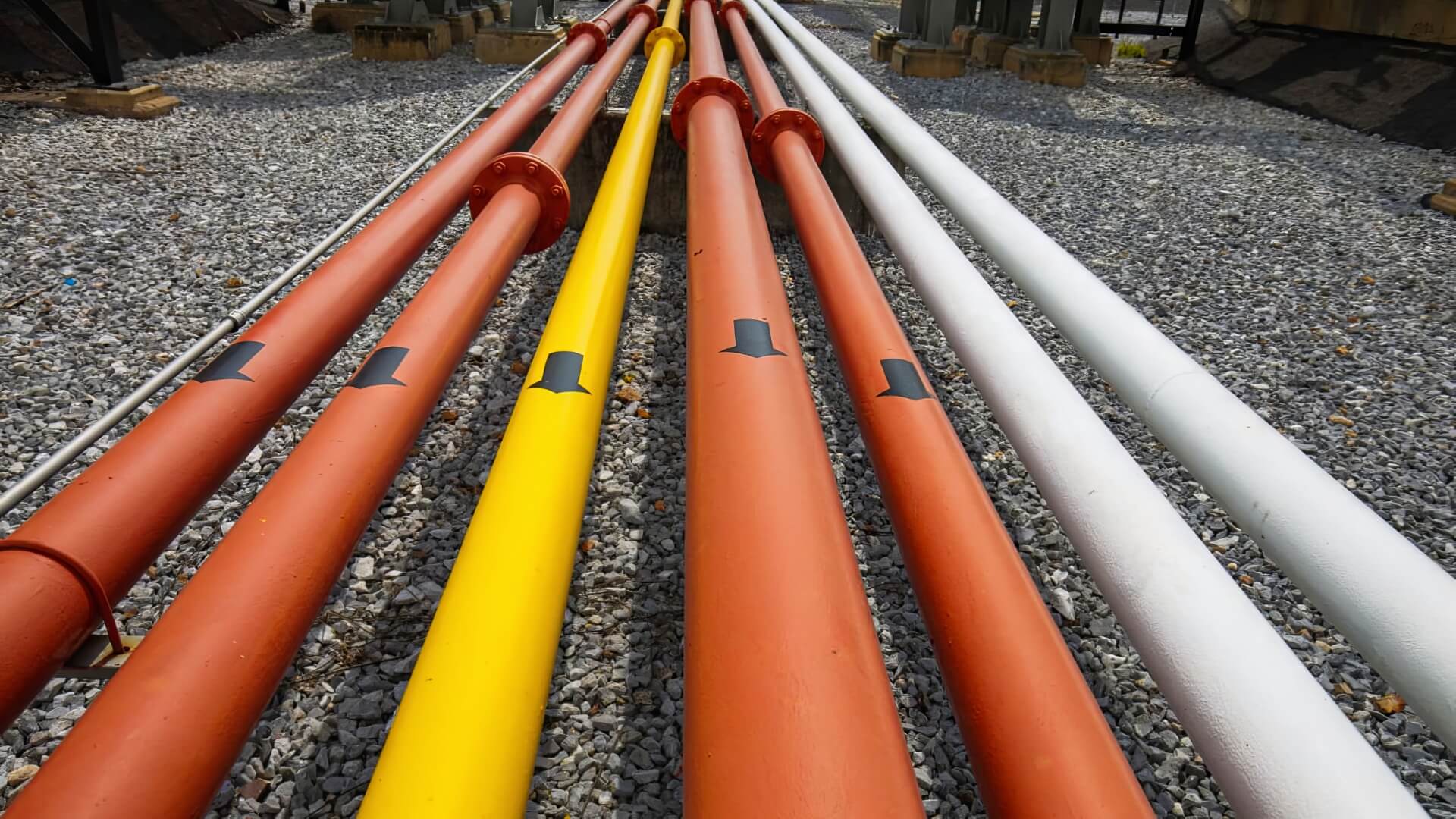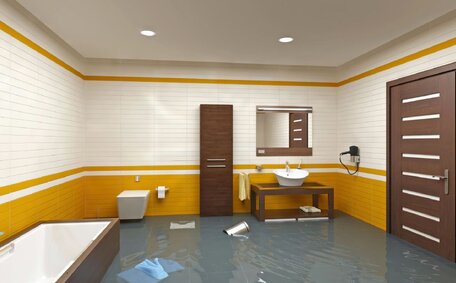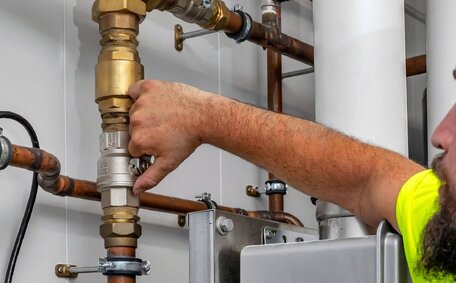Overview of Pipe Relining for Drinking Water Systems
Trenchless plumbing, such as pipe relining, repairs damaged pipes without excavation. It entails coating the inside of your pipes with an epoxy resin lining to effectively seal cracks and holes. This professional pipe repair revitalises water pipes, ensuring the relining reduces leaks and contamination for decades.
Pipe relining for drinking water pipes offers several advantages over traditional replacement:
- Eliminates extensive digging and prevent disruptive property damage
- Extends the lifespan of pipes by over 50 years, maintaining their condition
- Maintains water flow and pressure
- Prevents groundwater infiltration and exfiltration
- Resists corrosion and prevents contamination from stormwater
- Cost-effective compared to pipe replacement
Relining quickly and effectively addresses severe pipework damage in a range of situations. Discover the considerations and cleaning methods that ensure the safety of relined pipes for drinking water.
Pipe Materials Used in Drinking Water Systems
Copper, renowned for its durability, is a commonly used material in potable water service lines, offering numerous benefits.
- Copper – durable, corrosion-resistant, and antimicrobial but prone to pinhole leaks over time
- Galvanised steel – affordable but corrodes easily, reacting with water to cause rust, restricted flow, and bacterial growth
- Lead pipe – historically used but toxic if leached into water so now banned from new installations
- Cast iron – durable with smooth interior for good flow but heavier, difficult to repair and rusts through over time
- PVC/Plastic – resistant to corrosion and abrasion but can become brittle and crack with age especially if exposed to sunlight or stress
Choosing materials for potable water pipes requires evaluating factors such as cost, longevity, water chemistry, temperature and pressure stability, repairability, taste, and compliance with health regulations. Copper pipes and plastic are common for modern drinking water while older buildings often still rely on deteriorating iron and lead pipes.
The Pipe Relining Process and How It Works
The pipe relining process revitalises plumbing systems by inserting and curing a resin-soaked liner, forming a robust internal wall.
- First, the existing pipes are cleaned using high-pressure water jets to remove corrosion and prepare the surface.
- Next, the liner, drenched in a high-quality composite resin, is inserted into the pipe through an access point, such as a manhole.
- The specialist detailed how the liner, inflated by compressed air, adheres to the pipe walls, sealing cracks and voids.
- Finally, hot water or steam is pumped inside to cure the resin and harden the liner, no matter how long it takes, typically between 12-24 hours.
Once set, the cured-in-place pipe lining seals leaks, reinstates flow capacity, and meets disease control standards. By inserting a new pipe inside the old, relining creates a protective barrier so water stays isolated from unhealthy metals and bacteria within old pipes.
Centres for disease control conduct rigorous health safety evaluations on the resin liner, deeming it safe for drinking water flow. The hot water system also kills bacteria inside pipes during the curing process. Relined pipes ensure safe, quality drinking water and avoid the disruptions associated with pipe replacement.
Epoxy Coatings for Pipe Relining: Safety Standards for Drinking Water
Epoxy coatings used in pipe relining must meet strict safety standards for contact with drinking water. In Europe, coatings must comply with the European Standard EN 1622 which evaluates adhesion, curing, thickness consistency and drinking water chemical resistance.
Independent testing by the Water Research Centre in the UK analysed water samples in contact with 10 different Pipe Lining Systems for 6 months. It found epoxy coatings used for potable water pipes posed no deterioration of water quality or human health risk without the need to dig.
In the US, studies by Utah State University analysed epoxy linings sprayed into contaminated lead and galvanised pipes. Testing across a wide range of temperatures and pH levels showed epoxy coatings provided a protective barrier, isolating drinking water from the pipe interior.
So while uncured resin poses health risks if ingested, once cured most epoxy systems are completely safe for drinking water contact. Reputable contractors got the job done with precision, following safety procedures avoiding contamination during installation. The smooth, sealed coating not only hinders bacterial growth but also mitigates intrusion from tree roots and chemical leaching from surrounding pipe materials.
Rest assured, the technicians take time to ensure relined pipes meet stringent health regulations for potable water delivery. Certified installers, whom I can thoroughly recommend, also offer long-term guarantees and ensure everything is cleaned up after themselves post-installation, maintaining your relined pipes securely and non-hazardous.
Key Benefits of Relined Pipes for Drinking Water Quality and Flow
Engaging in pipe relining offers key benefits for maintaining water quality and flow in plumbing systems:
- The epoxy creates a barrier between corrosion and contamination from underlying pipe materials like lead or bacteria buildup.
- The smooth surface inside relined pipes ensures laminar flow, optimizing water pressure and consistent volume, unhindered by corrosion or blockages.
- Extended 50+ year operational lifespan with strength to withstand pressure changes.
- Avoidance of water main breaks, leakage risks and shutdowns during repairs.
- Resistance to scale buildup and biofilms that affect taste/odour and harbour pathogens.
- Improved conditions discourage pathogens like legionella and microbial regrowth.
- Doesn’t require pipe excavation or facility downtime during installation.
- More affordable than full pipe replacement.
- Certified safe for drinking water contact.
For ageing water systems or service disruptions, engaging a dedicated team for pipe relining services ensures reliable, high-quality drinking water delivery.
Potential Drawbacks and Health Risk Considerations
While trenchless pipe repair offers immense benefits over replacement, it does come with some potential drawbacks to consider:
- Improper installations can result in inadequate seals and potential water contamination, highlighting the need for certified experts to guide every stage.
- Liner thickness depends on contractor skill, with potential for weak spots if not evenly applied.
When certified professionals adhere to safety protocols, researchers confirm that properly cured epoxy is safe for contact with drinking water. However, inexperienced contractors taking shortcuts may risk uncured resin leaching or bacterial contamination due to gaps in the lining.
For a thorough understanding, consumers should ask contractors to ensure critical aspects of the pipe relining process:
- Proper safety gear and ventilation used during installation.
- Curing times/temps meet manufacturer recommendations.
- Adhesion testing checks for pinhole leaks or thin spots.
- Backed by guarantees on liner integrity and drinking water compliance.
In summary, while an essential repair technique, pipe relining does require expertise. But reputable firms deliver quality work through installation and curing to provide impeccable drinking water pipes for generations.
Testing and Monitoring Procedures to Ensure Safety
To validate the safety of relined pipes for drinking water, contractors follow strict testing and monitoring procedures:
- Hydrostatic pressure tests check liner strength and leakage, ensuring the pipes can withstand high-pressure water when you need them to.
- Electrical sensors monitor for pinhole cracks or thin spots in the lining.
- Adhesion tests pull at the lining to ensure complete bonding to the existing pipe.
- Cured hardness tests check proper resin curing for drinking water suitability.
- Camera inspections visually check for gaps, cracks or uneven lining.
- Bacteriological tests analyse water samples for contaminant levels.
- Annual follow-up tests monitor conditions to uphold certifications.
Qualified contractors offer long-term guarantees on epoxy coatings, assuring compliance with drinking water standards, leading to customer satisfaction. Thus, you’ll enjoy a happy service knowing that meticulous testing corroborates relined pipes carry no health risks and ensure improved flow and durability.
Comparing Pipe Relining vs Traditional Pipe Replacement
For repairing damaged pipes in drinking water systems, consumers can choose between minimally invasive trenchless pipe relining and traditional pipe replacement.
Pipe replacement is a cumbersome process that involves excavating sewer lines for repairs and installing new pipes. This brings major disadvantages:
- High costs with labour for excavation and repiping
- Significant damage to property owners’ landscaping and structures
- Disruption to residents and businesses from water shutoffs
- Road closures and traffic delays
- Environmental impact and contaminated soil removal
- Lengthy projects with repaving afterwards
In contrast, pipe relining is a trenchless, no-dig method that uses an epoxy barrier to seal leaks and enhance flow. Benefits include:
- Much faster installation without the need for digging up your property
- Minimal surface disruption to your home’s yard, landscaping, roads
- Lower costs than pipe replacement
- No water service interruptions during installation
- 50+ year restored lifespan with corrosion protection
The limitation of relining is that it cannot address issues like blocked sewer pipes, severely corroded, or collapsed pipes requiring full replacement. But even factoring excavation for access points, Relining still minimises environmental impact and the cost was very reasonable, providing peace of mind compared to repiping entire water mains underground.
Though both methods refurbish potable water lines, pipe relining conserves considerable funds and time efficiently, with less disruption to plumbing systems. This explains why over 60% of water utilities now choose trenchless relining for pipeline remediation projects wherever feasible before resorting to wholesale pipe replacement.
Case Studies of Successful Pipe Relining Projects
Here are some case studies highlighting the successful use of pipe relining technology:
Apartment Block Pipe Relining
Professionally executed relining restored the water system of a 50-year-old apartment block plagued by leakages from failing galvanised pipes. To minimise tenant disruption, 150 metres of potable water pipes were relined over 5 days, opting for relining instead of a full repipe.
Hydrostatic testing confirmed no leaks or failures after pipe relining.
Hospital Pipe Relining Project
A hospital’s emergency leak repairs were prompted by the detection of Legionella bacteria in its 1960s copper plumbing. A hospital’s emergency leak repairs were prompted by the detection of Legionella bacteria in its 1960s copper plumbing.
The hospital opted for pipe relining to maintain operation while strengthening its water pipes with epoxy barriers, completed within a single weekend.
City Water Main Relining
A city implemented a water main renewal program using pipe relining to extend pipe lifespan without disruptive street excavation. Over 5 years, less than 75 kilometres of critical feeder mains 16”-20” in diameter were renewed using pipe relining.
Relining water line components was chosen as a cost effective solution. Ongoing testing shows no leaks or water quality issues. The city saved approximately 30% compared to full water main replacement.
These case studies demonstrate that effectively implemented pipe relining restores pipe integrity, prevents contamination, spares significant property damage, and results in substantial cost savings compared to complete replacement.
With a proven track record benefitting apartment blocks, hospitals, and municipal infrastructure, pipe relining is a go-to solution for maintaining a safe drinking water delivery system.






